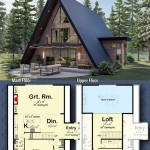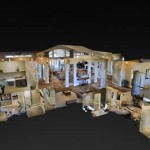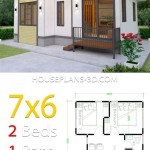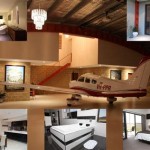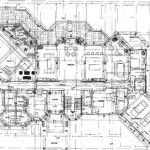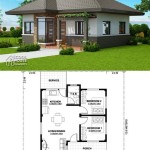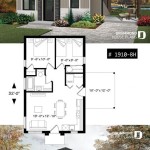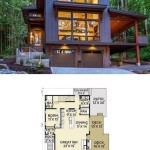Townhouse House Plans: The Key To Creating Your Dream Home
Townhouse house plans represent a unique approach to residential design, offering a blend of the privacy of a single-family home with the cost-effectiveness and convenience of multi-unit dwellings. These plans are carefully crafted to optimize space, functionality, and aesthetics, reflecting the specific needs and preferences of homeowners. The selection and implementation of appropriate townhouse house plans form a cornerstone in realizing a desired living environment.
Townhouses, typically characterized by shared walls and multiple stories, necessitate meticulous planning to ensure comfort, privacy, and efficient utilization of square footage. Successful townhouse designs incorporate several key elements, including strategic layout, optimized natural light, and seamless integration of indoor and outdoor spaces. The availability of diverse townhouse house plans allows prospective homeowners to find designs that align with their lifestyles, budgetary constraints, and long-term aspirations.
The customization potential within townhouse construction is significant. While adhering to the fundamental structure and shared architectural features, homeowners can tailor interior spaces, select finishes, and incorporate specific amenities. This flexibility allows for personalized living experiences within the framework of a community-oriented setting. Understanding the nuances of townhouse house plans is crucial for those seeking to create a dwelling that truly feels like home.
Understanding the Fundamental Elements of Townhouse House Plans
Townhouse house plans are distinguished by several defining characteristics that differentiate them from single-family detached homes or apartments. These fundamental elements shape the overall design, functionality, and living experience within the townhouse.
Shared Walls: A primary characteristic of townhouses is the presence of shared walls, often referred to as party walls, which connect adjacent units. These walls require careful attention to soundproofing and fire resistance to ensure privacy and safety for residents. Townhouse house plans must adhere to strict building codes and regulations regarding shared wall construction.
Vertical Structure: Townhouses typically span multiple stories, maximizing living space on a smaller footprint. This vertical orientation necessitates thoughtful planning of staircases, which must be both functional and aesthetically pleasing. The layout of rooms across different levels must also be carefully considered to optimize flow and accessibility.
Limited Exterior Access: Unlike detached homes, townhouses often have limited access to exterior spaces. Front and back yards may be small, or access to outdoor areas may be primarily through balconies or patios. Townhouse house plans must maximize the usability of these limited outdoor spaces, creating functional and inviting extensions of the interior living area.
Community Association: Townhouse communities are generally governed by a homeowner's association (HOA), which establishes rules and regulations regarding exterior maintenance, landscaping, and architectural consistency. Townhouse house plans must comply with these HOA guidelines to ensure harmony within the community.
Understanding these fundamental elements is critical for selecting and adapting townhouse house plans to meet individual needs and preferences. Careful consideration of shared walls, vertical structure, limited exterior access, and community association guidelines will contribute to a successful and enjoyable townhouse living experience.
Key Considerations When Selecting Townhouse House Plans
Choosing the right townhouse house plan is a critical step toward creating a comfortable and functional living space. Several factors should be carefully considered during the selection process to ensure the plan aligns with individual needs, lifestyles, and long-term goals.
Lifestyle Compatibility: The layout and features of a townhouse house plan should complement the homeowner's lifestyle. For example, families with young children may prioritize open-concept living areas and easily accessible outdoor spaces. Individuals who work from home may require a dedicated office or study. Empty nesters may prefer single-level living or layouts that minimize stairs. Understanding specific lifestyle needs is essential for selecting a plan that promotes comfort and convenience.
Budget and Affordability: Townhouse house plans vary significantly in cost, reflecting differences in size, features, and finishes. It is crucial to establish a realistic budget and carefully evaluate the affordability of different plans. Consider not only the initial purchase price but also ongoing expenses such as property taxes, homeowner's association fees, and maintenance costs. Selecting a plan that aligns with financial capabilities is essential for long-term financial stability.
Location and Site Considerations: The location of the townhouse and the characteristics of the building site can significantly impact the suitability of a particular house plan. Consider factors such as proximity to amenities, access to transportation, views, and the orientation of the unit in relation to the sun. Also, evaluate the building site's topography, soil conditions, and any potential environmental constraints. Choosing a plan that is well-suited to the specific location and site conditions will enhance the living experience.
Future Needs and Flexibility: Consider potential changes in lifestyle or family size when selecting a townhouse house plan. Choose a plan that offers flexibility and the potential for future modifications. Features such as unfinished basements, bonus rooms, or adaptable layouts can provide opportunities for expansion or customization as needs evolve. Planning for the future will ensure the townhouse remains a comfortable and functional home for years to come.
By carefully considering lifestyle compatibility, budget and affordability, location and site considerations, and future needs and flexibility, prospective homeowners can make informed decisions when selecting townhouse house plans. This thoughtful approach will contribute to a satisfying and successful homeownership experience.
Optimizing Space and Functionality in Townhouse Design
Townhouse living often requires careful space optimization to maximize functionality and comfort within a limited footprint. Effective townhouse house plans incorporate strategies to create a sense of spaciousness, improve flow, and enhance usability of available square footage.
Open-Concept Living: Open-concept layouts, which combine living, dining, and kitchen areas into a single, free-flowing space, are particularly well-suited for townhouses. These layouts create a sense of spaciousness and promote social interaction. Strategic placement of furniture and the use of visual cues, such as area rugs, can help define distinct zones within the open space.
Vertical Emphasis: Townhouse house plans leverage the vertical element by incorporating features such as high ceilings, large windows, and loft spaces. These vertical elements draw the eye upward, creating a sense of height and airiness. Careful placement of windows can maximize natural light penetration, further enhancing the feeling of spaciousness.
Built-in Storage Solutions: Maximizing storage space is crucial in townhouses. Built-in storage solutions, such as bookshelves, cabinets, and closets, can help keep clutter at bay and optimize usable floor space. Custom-designed storage solutions can be tailored to specific needs and seamlessly integrated into the overall design.
Multifunctional Spaces: Designing spaces that can serve multiple purposes is an effective way to optimize functionality in townhouses. For example, a guest bedroom can double as a home office, or a dining area can be used as a workspace during the day. Multifunctional furniture, such as sofa beds and storage ottomans, can further enhance the versatility of these spaces.
Outdoor Living Integration: Integrating outdoor living spaces, such as balconies, patios, and decks, into the overall design can expand the usable living area of a townhouse. Creating seamless transitions between indoor and outdoor spaces can help maximize the feeling of spaciousness and provide opportunities for relaxation and recreation.
By incorporating these strategies, townhouse house plans can effectively optimize space and functionality, creating comfortable and inviting living environments within a limited footprint. Thoughtful design and careful attention to detail can transform a compact townhouse into a spacious and functional home.

How To Choose The Perfect House Plans For Your Dream Home

Dream House Plans Find The Home Floor Plan Of Your Dreams

Design Your Own House Floor Plans Roomsketcher

Design Your Own House Floor Plans Roomsketcher

New House Floor Plans Finding Your Dream Home Design Hubpages

Design Your Own House Floor Plans Roomsketcher
:max_bytes(150000):strip_icc()/SL-1352_HallsleyStreetofHope_Front-b32f9541aca74779ae939f27bc9344c3.jpg?strip=all)
25 Dream House Plans You Re Going To Flip For

Design Your Own Floor Plan With Our Free Interactive Planner Wayne Homes

Pin Page

How To Design A Home 10 Steps Your Dream
Related Posts

